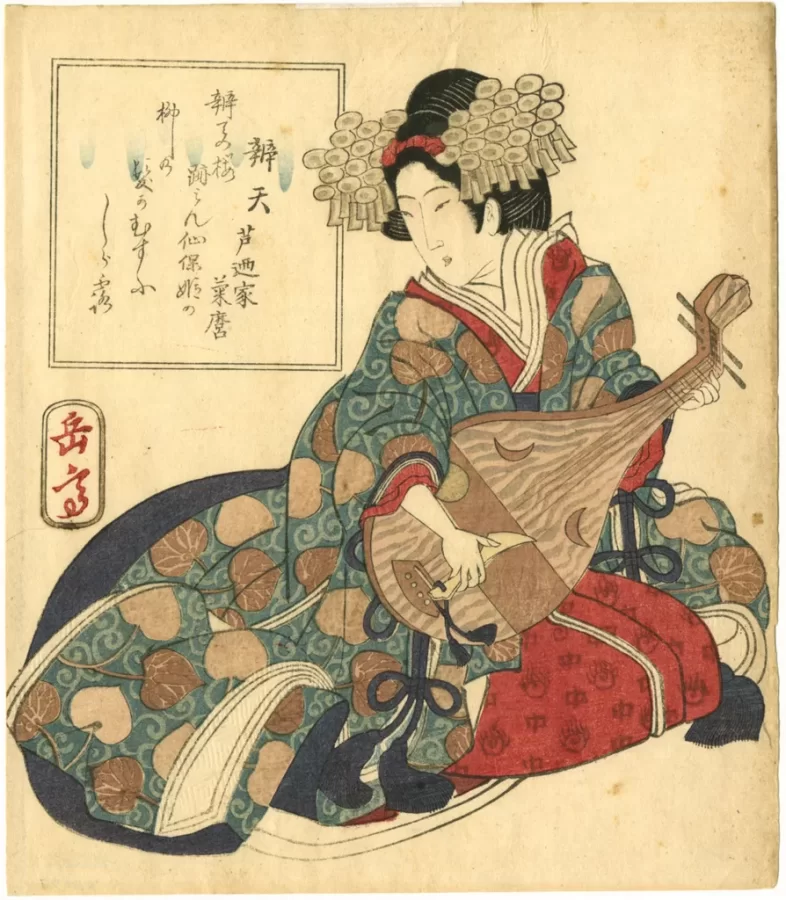Yashima Gakutei (Japanese, ca. 1786-1868)
Born in Osaka, Yashima Gakutei was a student of Totoya Hokkei and Hokusai. He is best known for his book illustrations and surimono, privately commissioned woodblock prints often commemorating events or winning poems in contests. While the details of his life are shrouded in mystery, Yashima was a prolific writer of kyōka poetry, which he often included in his prints. One of his particular talents was the use of embossing to create texture in parts of his prints, an example of which can be seen on the print of a woman playing a stringed instrument in our collection. One of the white cloth layers of her kimono has a raised swirling and zig-zagging pattern that can be best seen in her long cascading sleeve, but also in the outermost white layer around her neckline.
The figure in the print wears the many hair pins and elaborate robes of an oiran (花魁), a high-ranked courtesan. She personifies the goddess Benzaiten (弁才天), as evidenced by her main attribute: the lute-like biwa. With her origins in the Hindu goddess Saraswati, Benzaiten is a syncretic deity shared by Shintoism and Buddhism and is one of the Seven Gods of Fortune or Seven Lucky Gods. Benzaiten, whose name literally translating to “the goddess of eloquence,” represents all things that flow, from water, to music, to poetry. This print is a part of a series by Yashima representing all of the gods of fortune as beautiful women, or bijin.
The artist died the same year as the Meiji Restoration, which replaced the shogunate military government with a reinstallation of the emperor under a constitutional monarchy. This would change the course of Japanese politics and art going forward.


